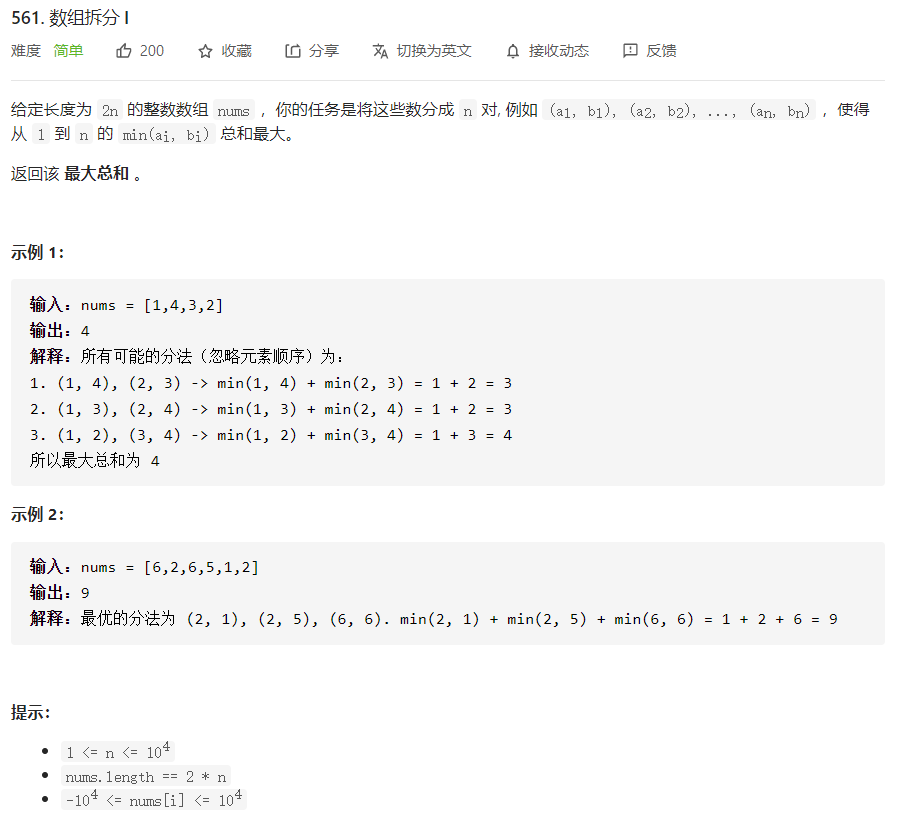
题目分析
这个题目是一个贪心问题,有思路很好写,没有思路就非常困难,能难倒你们吗?
排序
我们观察样例,假如有a < b < c < d四个数,那么应该如何配对呢?如果a和谁配对,那么最小值都是a,因此我们尽量让a和次小值b配对,如果a不和b配对,假设a和c或者d配对,那么b就和d或者c配对,那么之和为a+b,如果a和b配对,那么之和为a+c,是大于a+b的,因此我们要让最小的两个数配对。那么多组数也是同理。
因此我们可以让数组进行排序,0,1为一组,2,3为一组,这样排序后nums[0] < nums[1],nums[2] < nums[3]。因此我们把下标为偶数的求和,即可得到最后的结果。
算法的**时间复杂度为$O(nlog(n))$,空间复杂度为$O(1)$**。
1 | #include<iostream> |
计数排序
排序方法有很多,在这里不一一列举,常见的10种排序方法在Leetcode912题有详细介绍。这里主要说一下计数排序的思路。
因为这个题目已经告诉了我们整数的范围,范围不是很大,sort排序算法的时间复杂度是$O(nlog(n))$的,而计数排序特别适合于整数范围不大的情况,因此可以进行优化。
我们统计每个元素出现次数,然后从小到大取出,在取出的过程中只取出下标为偶数的值即可。
算法的**时间复杂度为$O(n)$,空间复杂度为$O(n)$**。
1 | #include<iostream> |
刷题总结
排序是数组类型题目的常考知识点,当我们看到数据范围在1e4~1e7,我们要想到排序方法,在这个范围内$O(nlog(n))$的算法恰好满足条件,当数据范围达到1e8时,我们就不能用系统的排序方案,只能去寻找线性时间复杂度的解法。希望小伙伴们要有这个反应和判断。因为在笔试中,往往都会告诉我们数据的范围,因此这个能力非常重要。